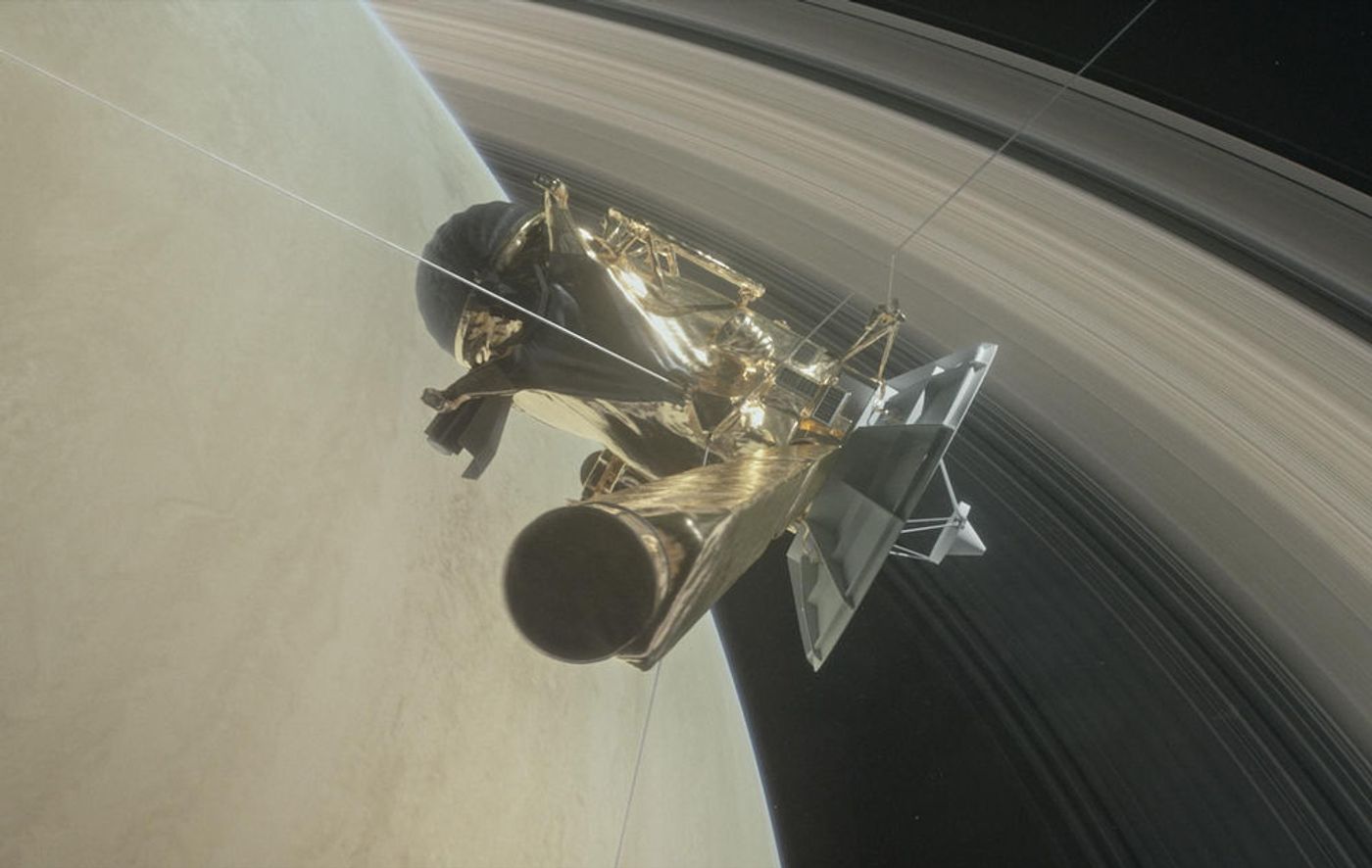Cassini Inches Closer to Grand Finale, a Suicidal Dive Into Saturn
NASA has relied on its Cassini spacecraft to study the Saturnine system for nearly 13 years. It originally launched from Earth almost two decades ago, but it took a while for the spacecraft to get to Saturn in the first place. When it arrived there, and throughout its operational life, it took countless fabulous up-close photographs of Saturn, its rings, and its 62+ moons.
Image Credit: NASA/JPL-Caltech
Thanks to the data we’ve obtained, we now understand more about some of the most interesting places in our Solar System, including Enceladus and Titan, both of which are Saturnine moons and may have the chemistry to support life.
Related: Cassini spies methane clouds on Titan
On the other hand, the mission can’t last forever. All of those moons that Saturn appears to sport each have their own gravitational influence on one another, and that very same gravitational influence also happens to tug on Cassini. This means the spacecraft is always making corrections to its orbit by burning fuel, and there’s only so much fuel onboard.
April 23rd, 2017 is the magic date when Cassini will activate its embedded suicide mode. It’s programmed to enter uncharted regions in between Saturn and its rings at a speed of around 70,000 mph, where it will orbit in this region 22 times. This will use what’s left of Cassini’s fuel, and then it will tumble into Saturn, where the spacecraft will ultimately be destroyed.
Related: Cassini grabs incredible pictures of the waves in Saturn's rings
As Cassini project manager Earl Maize puts it, Cassini will "break apart, melt, vaporize, and become a part of the very planet it left Earth 20 years ago to explore," during this suicide mission, during which all of Cassini’s sensors will be active and beaming information back to Earth as quickly as it can before it goes out with a bang.
But why is this necessary? Can’t Cassini just continue in orbit around Saturn without fuel just like all of the space junk floating around Earth? – Well, no.
Unlike Earth, Saturn has 62+ moons, and as we explained earlier, they each have a gravitational influence on Cassini. Without the fuel to make corrections to its orbital patch, Cassini proves to be a real threat to neighboring moons, as it could inadvertently smash into one as it drifts away from its usual orbit without the means to bump itself back into place.
This means potentially life-supporting moons like Enceladus and Titan could get bombarded by Cassini, and this could taint an otherwise sterile environment with Earthly microbes. Such an issue would spark false positives if we ever did send a life-searching mission to either of these moons.
By diving into Saturn, which is a gassy giant that can’t possibly support life to our understanding, we spare these moons and keep their environments sterile.
“Cassini’s own discoveries were its demise,” Maize, continued. “We cannot risk an inadvertent contact with that pristine body.”
Cassini has definitely served us very well over the years, but its mission is a testament to future space exploration missions. Fortunately, the costs of future missions could be slashed as the concept behind cubesats and smallsats gains traction in the space exploration community.
Source: The Guardian









